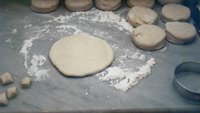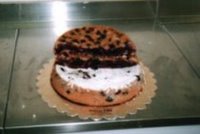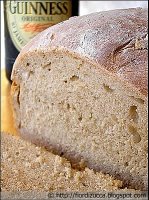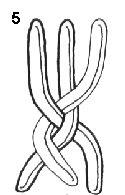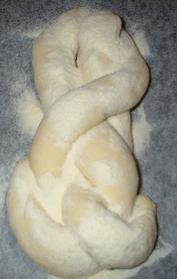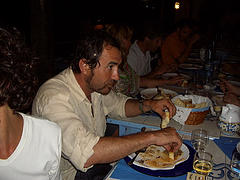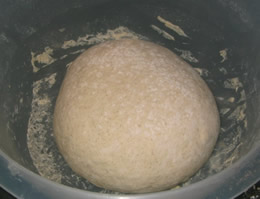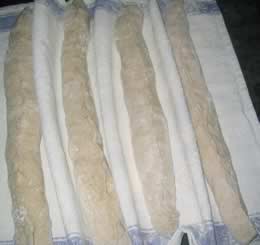San Biagio – Holiday Tradition in Milan – Panettone and more Panettone
 Strolling along the streets of Milan, during the early days of February, Panettone, the Christmas bread of Milan, is sold with steep discounts. While not all stores will offer such heavy discounts the tradition is “two Panettone for the price of one.” Many think that this is an end of season sale to eliminate the remaining inventory of Panettone, instead nothing could be farther from the truth. This tradition is deeply routed in Milan’s culture. The 3rd of February is day where all Milanesi eat Panettone. This is the day of San Biagio.
Strolling along the streets of Milan, during the early days of February, Panettone, the Christmas bread of Milan, is sold with steep discounts. While not all stores will offer such heavy discounts the tradition is “two Panettone for the price of one.” Many think that this is an end of season sale to eliminate the remaining inventory of Panettone, instead nothing could be farther from the truth. This tradition is deeply routed in Milan’s culture. The 3rd of February is day where all Milanesi eat Panettone. This is the day of San Biagio.San Biagio was born in Armenia at the end of the III century AD. He was a prominent doctor and the people of Armenia wanted him to become Bishop. He did not want to accept the position. He felt he was not worthy. He did finally accept however he continued to practice his profession of physician.
 During a religious function a woman approached him carrying her son who was choking. The child had swallowed a fishbone and it was stuck in his throat. The Bishop threw aside his religious duties, realized the boy’s difficulty and shoved a piece of consecrated bread in the boy’s mouth and made him swallow. The bread carried the fishbone into the boy’s stomach allowing the child to breathe. The congregation cried miracle. The Bishop attempted to keep a low profile but word of his miracles reached the governor of the Roman province who did not like the public appeal of this upstart religious man.
During a religious function a woman approached him carrying her son who was choking. The child had swallowed a fishbone and it was stuck in his throat. The Bishop threw aside his religious duties, realized the boy’s difficulty and shoved a piece of consecrated bread in the boy’s mouth and made him swallow. The bread carried the fishbone into the boy’s stomach allowing the child to breathe. The congregation cried miracle. The Bishop attempted to keep a low profile but word of his miracles reached the governor of the Roman province who did not like the public appeal of this upstart religious man.Agricola, the Pretore, was convinced that the best solution was to kill San Biagio and that his following would soon disband. Agricola summoned San Biagio to his court. San Biagio was skinned alive with iron combs and then decapitated in a show of power of the Roman Empire. The error was fatal to the Pretore’s political career. San Biagio first became a Martyr and later Saint. San Biagio is the Protector Saint of the Throat.
The question remains what does this have to do with the Milan. San Biagio never visited Milan. We must advance several centuries. The Catholic church is now the official religion of the state. Panettone is prepared for the Christmas holidays and as all things related to the religious culture a matriarch took her Panettone to the local priest, Desiderio, to be blessed. Desiderio was very busy for the holidays and suggested that the lady leave the Panettone and he would bless it as soon as he could. She could then visit and take the Panettone home. The woman forgot her Panettone and the days passed but the priest had not forgotten the delicious sweet bread.
 Every day he would walk by the Panettone and break off a small piece to eat. The days passed and the Panettone became smaller and smaller until it was completed consumed. The matriarch finally remembered her Panettone and went to visit Desiderio on the third of February. Slowly the priest went the corner where the Panettone should have laid inside its shiny wrapping. Much to his surprise the wrapper was filled with a Panettone twice the size of the original. Out of relief he cried, “Miracolo, deve essere stato San Biagio!”
Every day he would walk by the Panettone and break off a small piece to eat. The days passed and the Panettone became smaller and smaller until it was completed consumed. The matriarch finally remembered her Panettone and went to visit Desiderio on the third of February. Slowly the priest went the corner where the Panettone should have laid inside its shiny wrapping. Much to his surprise the wrapper was filled with a Panettone twice the size of the original. Out of relief he cried, “Miracolo, deve essere stato San Biagio!” The woman convinced that he spoke of the increased size of the Panettone told her neighbors and the following year many more Panettone arrived to be blessed. Desiderio explained that miracles are not so easily achieved but that each family should keep the blessed Panettone at least through the third of February. The Panettone should be consumed instead of blessed bread and that San Biagio would protect them. Since San Biagio is the Saint Protector of the throat today, it is believed by old and young alike, that eating Panettone on the 3rd of February will protect them from illness in the cold hinterland winter. The two for one sale is because of the Miracle of the Growing Panettone!
The woman convinced that he spoke of the increased size of the Panettone told her neighbors and the following year many more Panettone arrived to be blessed. Desiderio explained that miracles are not so easily achieved but that each family should keep the blessed Panettone at least through the third of February. The Panettone should be consumed instead of blessed bread and that San Biagio would protect them. Since San Biagio is the Saint Protector of the throat today, it is believed by old and young alike, that eating Panettone on the 3rd of February will protect them from illness in the cold hinterland winter. The two for one sale is because of the Miracle of the Growing Panettone!If Panettone goes on sale at your local store, buy one and set it aside for the 3rd of February. It may not be as effective as the flu shot but it surely is more tasty!
Tags: Holiday Traditions Milan Lombardia Winter Vacation Panettone Travel Italy
Labels: christmas, Holiday Traditions, Italian Bread, Lombardia, Milan







